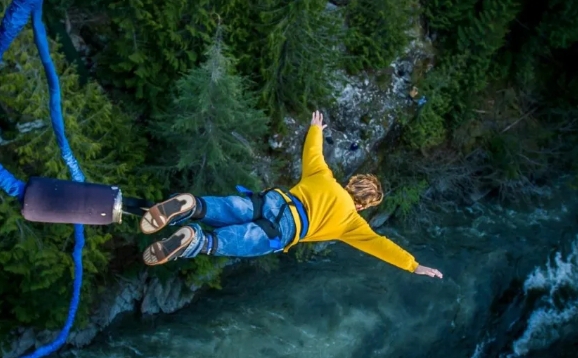
Travel Tips for Adventure Seekers
Adventure travel has gained immense popularity in recent years. Whether you’re scaling towering peaks, diving into crystal-clear waters, or traversing dense jungles, the thrill of exploring the unknown is unmatched. However, embarking on such journeys requires careful planning, adaptability, and a strong sense of adventure. Here are comprehensive travel tips tailored for adventure seekers to make your journey safe, enriching, and unforgettable.
1. Research Your Destination Thoroughly
Before embarking on any adventure, gain an in-depth understanding of your destination. This includes:
- Geography and Terrain: Know the physical features you’ll encounter—mountains, rivers, deserts, or forests.
- Weather Conditions: Check the best time of year to visit. Extreme weather can make some activities unsafe.
- Local Culture and Customs: Respect local traditions and learn basic phrases in the native language.
- Regulations and Permits: Some activities like hiking in national parks or diving in marine reserves require permits. Acquire these in advance.
2. Prioritize Physical Preparation
Adventure activities often demand high levels of physical fitness. Prepare your body with:
- Regular Exercise: Incorporate cardio, strength training, and flexibility exercises into your routine.
- Activity-Specific Training: If you plan to trek, hike on varied terrains beforehand. For scuba diving, practice swimming and deep breathing.
- Health Checkups: Consult a doctor to ensure you’re fit for strenuous activities, especially at high altitudes or underwater.
3. Pack Smartly
Your packing list can make or break your adventure. Consider:
- Essential Gear: Pack gear tailored to your activity—hiking boots, climbing harnesses, or snorkeling equipment.
- Layered Clothing: Opt for moisture-wicking layers to adapt to changing temperatures.
- First-Aid Kit: Include bandages, antiseptic, pain relievers, and any personal medications.
- Portable Tools: Carry a multi-tool, waterproof matches, and a compact flashlight.
4. Embrace Sustainable Travel Practices
Protect the environment for future adventurers by:
- Leave No Trace: Dispose of waste responsibly and avoid disturbing wildlife.
- Eco-Friendly Gear: Use biodegradable soaps, solar-powered chargers, and reusable water bottles.
- Support Local Communities: Choose locally-owned accommodations, guides, and eateries.
5. Stay Safe
Adventure travel involves risks, but these can be mitigated with proper precautions:
- Hire Experts: Enlist experienced guides for activities like mountaineering or deep-sea diving.
- Know Emergency Protocols: Familiarize yourself with local emergency numbers and evacuation procedures.
- Use Reliable Gear: Invest in high-quality equipment to avoid accidents.
6. Document Your Journey
Capture the essence of your adventure for lasting memories:
- Photography and Videography: Use a durable camera or smartphone with protective casing.
- Travel Journal: Write about your experiences to relive them later.
- Share Responsibly: Inspire others without oversharing sensitive locations to prevent overtourism.
7. Stay Flexible and Adaptable
Adventures rarely go as planned. Embrace the unexpected by:
- Having Backup Plans: Weather or unforeseen events might require changes.
- Maintaining a Positive Attitude: Challenges can often lead to the best stories.
- Listening to Locals: They often know hidden gems and safer alternatives.
8. Build Connections
Adventures are more enriching when shared:
- Travel with Like-Minded People: Join groups or forums to find fellow adventure seekers.
- Learn from Locals: Engage with the community to gain unique insights and stories.
- Collaborate with Guides: Their expertise can enhance your experience.
9. Invest in Travel Insurance
Unexpected incidents can occur during adventurous activities. Ensure:
- Comprehensive Coverage: Your insurance includes adventure sports and medical evacuations.
- Understand Exclusions: Some policies exclude high-risk activities, so choose wisely.
10. Plan for Recovery
After intense activities, prioritize recovery:
- Rest Days: Allow your body to recuperate.
- Hydration and Nutrition: Replenish lost energy with balanced meals and adequate water intake.
- Massage or Stretching: Relieve muscle tension to prevent soreness.
Must-Visit Adventure Destinations
If you’re seeking inspiration, consider these iconic adventure destinations:
- Patagonia, South America: Known for its breathtaking landscapes and trekking opportunities.
- Queenstown, New Zealand: A hub for bungee jumping, skydiving, and water sports.
- Himalayas, Asia: Perfect for trekking, mountaineering, and spiritual exploration.
- The Great Barrier Reef, Australia: A paradise for divers and marine life enthusiasts.
- Iceland: Famous for its volcanic landscapes, glaciers, and Northern Lights.
Conclusion
Adventure travel is a life-changing experience, offering not only adrenaline rushes but also profound personal growth. By preparing well, staying safe, and respecting the environment, you can make the most of your journey. Embrace the unknown, step out of your comfort zone, and let the world surprise you with its boundless beauty and adventure.
Leave a Reply